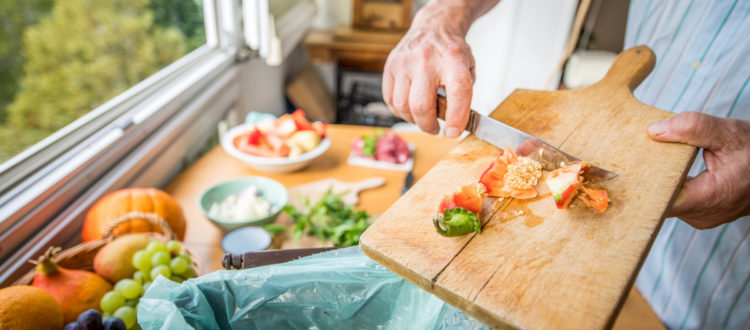PFM Staff Tips to Reduce Food Waste
Happy Stop Food Waste Day!
Started in 2017, Stop Food Waste Day is the last Wednesday in April and is an international day of action about educating and igniting change in the food waste issue. Food waste is central to some of the critical global challenges we presently face, including food insecurity, health & wellbeing, climate change, pollution, and the sustainability of agriculture and oceans.
Here are some startling statistics from the Stop Food Waste Day website:
- 33% of all food produced globally is lost or wasted every year.
- 45% of root crops, fruit and vegetables grown globally are lost or wasted per year.
- $1,866 is the average annual cost of food wasted by the average American family.
- 25% of the food wasted globally could feed all 795 million undernourished people worldwide.
- 8% of all greenhouse gas emissions each year are due to food loss and waste.
Want to minimize your food waste to help decrease these alarming numbers?
Check out these practical, creative, and impactful ways the Portland Farmers Market staff reduces their food waste:
Katy, Executive Director
- Makes broth or stock with leftover meat bones and veggie ends. Keep onions tops, celery leaves, carrot peelings, etc. in a storage container in the freezer. When the bag is filled up, it’s time to make stock!
- Freeze leftover food for later eating.
- Make and freeze pesto-like sauces out of whatever herbs/greens are over-abundant (i.e., basil, parsley, arugula, kale) with olive oil & garlic.
Ada, Market Manager
- Make substitutions in recipes. If I don’t have the specific vegetable a recipe calls for, I’ll use what I have on hand. For example, kale is an excellent substitution for spinach.
- Freeze excess soup in takeout containers or any appropriately-sized containers in meal portions to quickly defrost what I will eat that day (and label them so I know what I’m eating!)
Katherine, Market Accountant & Office Manager
- Freeze leftover broth, stock, tomato paste, and pasta sauces in ice cube trays. You are all set when you need a few tablespoons of broth for stir-fries or tomato paste for a soup!
- Freeze leftover herbs in ice cube trays, too – portion out spoonfuls of your chopped herbs and press them into the trays, topping off each “cube” with a thin layer of oil. Once the cubes are frozen solid, transfer them to a freezer bag for long-term storage.
Steph, Communications & Marketing Manager
Learning how to properly store fruits and vegetables to preserve their freshness and increase shelf life has been a game-changer for me! Here are some tips on storing produce that is in season now:
- Do not wash strawberries until right before consumption! Store them on a shelf in the refrigerator in a single layer in an aerated container on a tray lined with cloth, then cover them loosely with another cloth.
- Put bundled asparagus stalks upright in a bowl or dish with an inch of water and place on a refrigerator shelf or wrap the cut ends in a moist paper towel and put in a breathable bag in the high-humidity drawer of the refrigerator.
- Wrap lettuce and delicate herbs, like basil and cilantro, in foil and store in your fridge’s crisper.
Check out Save The Food website to learn more food storage tips and tricks!
Lexi, Market Manager
- Cook up anything that may be on the verge of going bad. Freeze any leftovers to save you time later!
- Save your veggie scraps and make stock.
- Throw fruit and veggie scraps in a smoothie. I make smoothies most days and always get creative with what goes in the blender (i.e., kale stems, broccoli ends, fruit on its last leg, etc.).
- Moving things around in your fridge and freezer (i.e., bringing older stuff to the front) to better grasp what is in there and what should be used first.
- Get over the aesthetics. If a piece of produce is growing mold, chop it off and use whatever is still good.
- “Best By” and “Expired” dates are suggestions. Use your sniffer and your senses.
- Have an appreciation for the food you are consuming and the resources/hands that went into getting the food to your kitchen.
Kyrsten, Market Manager
My primary waste prevention method is cooking perfect portion sizes. I can’t always guarantee I’ll be in the mood for leftovers, so I’ve perfected one-serving meals! It also helps me save money and resources on groceries by not over-shopping.
Amber, Operations Director
Two words, A Wok. On Friday night before the weekend markets, I empty the veggie drawers in my fridge and throw it all in a searing hot, cast iron wok. I use some very basic sauces: soy, fish and oyster; then put it over rice and top it with two fried eggs. This method helps me keep track of my produce so nothing goes bad and ensures that I am rewarded heavily when I inevitably over-shop at the market.
We hope you were able to glean some valuable tips that you can practice in your home!

